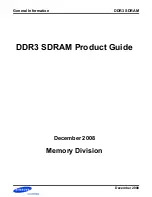
C
ONFIGURING
THE
S
WITCH
6-58
This switch uses the Extensible Authentication Protocol over LANs
(EAPOL) to exchange authentication protocol messages with the client,
and a remote RADIUS authentication server to verify user identity and
access rights. When a client (i.e., Supplicant) connects to a switch port, the
switch (i.e., Authenticator) responds with an EAPOL identity request. The
client provides its identity (such as a user name) in an EAPOL response to
the switch, which it forwards to the RADIUS server. The RADIUS server
verifies the client identity and sends an access challenge back to the client.
The EAP packet from the RADIUS server contains not only the challenge,
but the authentication method to be used. The client can reject the
authentication method and request another, depending on the
configuration of the client software and the RADIUS server. The
encryption method used to pass authentication messages can be MD5
(Message-Digest 5), TLS (Transport Layer Security), or TTLS (Tunneled
Transport Layer Security). TLS, TTLS, and PEAP will be supported in
future releases. The client responds to the appropriate method with its
credentials, such as a password or certificate. The RADIUS server verifies
the client credentials and responds with an accept or reject packet. If
authentication is successful, the switch allows the client to access the
network. Otherwise, network access is denied and the port remains
blocked.
The operation of dot1x on the switch requires the following:
• The switch must have an IP address assigned.
• The IP address of the RADIUS server must be specified.
• 802.1X must be enabled globally for the switch.
• Each switch port that will be used must be set to dot1x “Auto” mode.
• Each client that needs to be authenticated must have dot1x client
software installed and properly configured.
• The RADIUS server and client also have to support the same EAP
authentication type – MD5. (Some clients have native support in
Windows, otherwise the dot1x client must support it.)
Summary of Contents for GSW-1676
Page 1: ...GSW 1676 GSW 2476 User Manual...
Page 2: ......
Page 16: ...FIGURES xvi...
Page 58: ...CONFIGURING THE SWITCH 6 10 Figure 6 3 Status Overview...
Page 62: ...CONFIGURING THE SWITCH 6 14 Web Click STATUS Statistics Figure 6 4 Port Statistics...
Page 71: ...STATIC MAC 6 23 Figure 6 13 Counter Configuration...
Page 109: ...802 1X 6 61 Figure 6 32 802 1X Configuration...
Page 113: ...802 1X 6 65 Web Click 802 1X Statistics Figure 6 33 802 1X Statistics...
Page 128: ...TROUBLESHOOTING A 4...
Page 138: ...SPECIFICATIONS C 4...
Page 144: ...GLOSSARY Glossary 6...
Page 148: ...INDEX Index 4...
Page 149: ......
Page 150: ...GSW 1676 GSW 2476 E052010 CS R02 149100011100H...
















































